Understanding Film Theory: An Essential Guide
Basic knowledge of Film Theory could be your ticket to making a compelling argument, a classic film, or winning at Jeopardy. So read on!
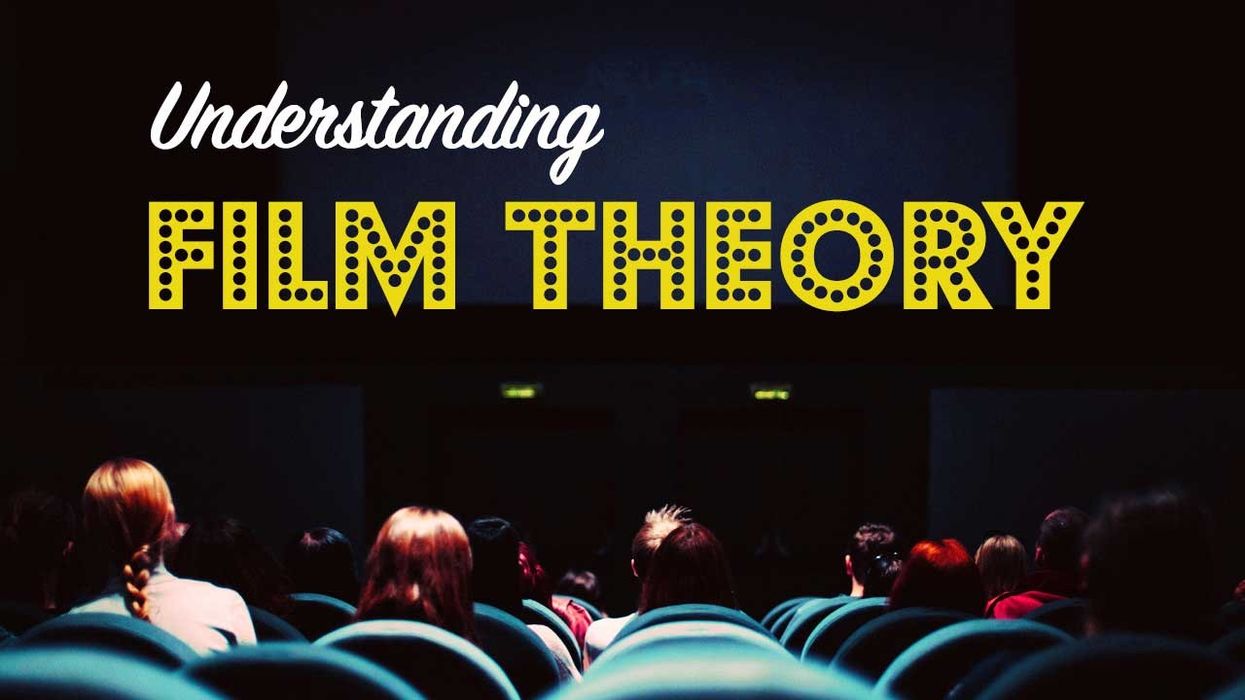
Tell me if this sounds familiar. It’s a Friday night, and you and your group of friends are exiting the movie theater. You saw a new release, and everyone is jockeying to get their opinion out. It can be hard to articulate the way you feel about a movie or TV show besides the typical "good" or "bad" gut reaction.
Sometimes you want to say more about a film or TV show. Maybe you want to debate what the ending ofInception means or have Sir Gawain and The Green Knight explained.
Or maybe you want to write, direct or produce. It’s important to have a baseline of Film Theory so you can properly analyze what’s in front of you.
To dissect a film and understand the context can take years of training. But you've been training without knowing it. Every time you watch a new show or movie you're building an internal database. You have something to base your reactions on and, over time, your tastes grow.
If you want to work in Hollywood as a creative or even critique film and television for a living, Film Theory is extremely important. In this post, we're going to learn how to put that training of consuming media into action by learning about Film Theory.
What Is Film Theory?
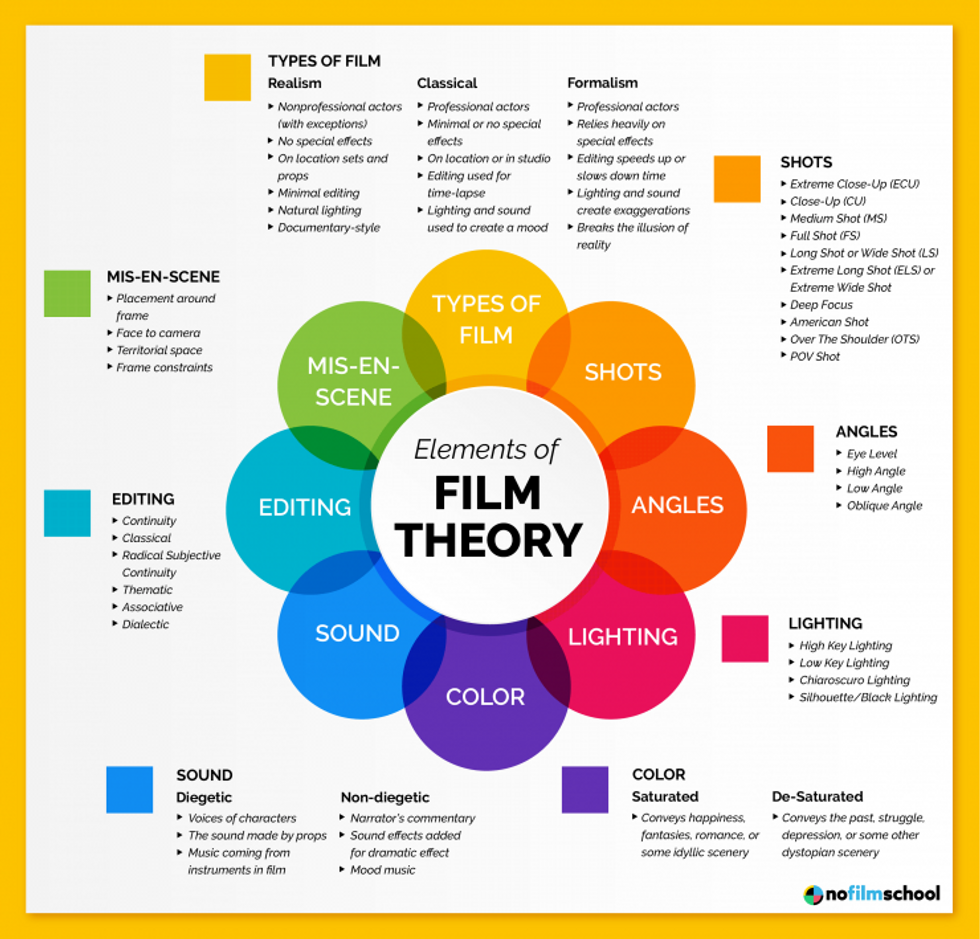
According to The Routledge Encyclopedia of Film Theory, Film Theory is“…a set of scholarly approaches within the academic discipline of cinema studies that question the essentialism of cinema and provides conceptual frameworks for understanding film's relationship to reality, the other arts, individual viewers, and society at large."
Say what?
In layman's terms, Film Theory is a way of breaking down movies and television. Here is another in-depth film theory definition from britannica.com. Film theory can be the building blocks for knowledge, debate, and study. Wonder what the ending of Taxi Driver means? Or maybe you just want to dig deeper into your own work.
Theorists break films down to analyze them according to their place in society. The better you get at reading films, the more meaning you can put into your work. You can’t create a unique film or television show without a basic understanding of what came before you.
So how does one analyze a film or TV show?
Film Theorists use these key elements:
Film Criticism
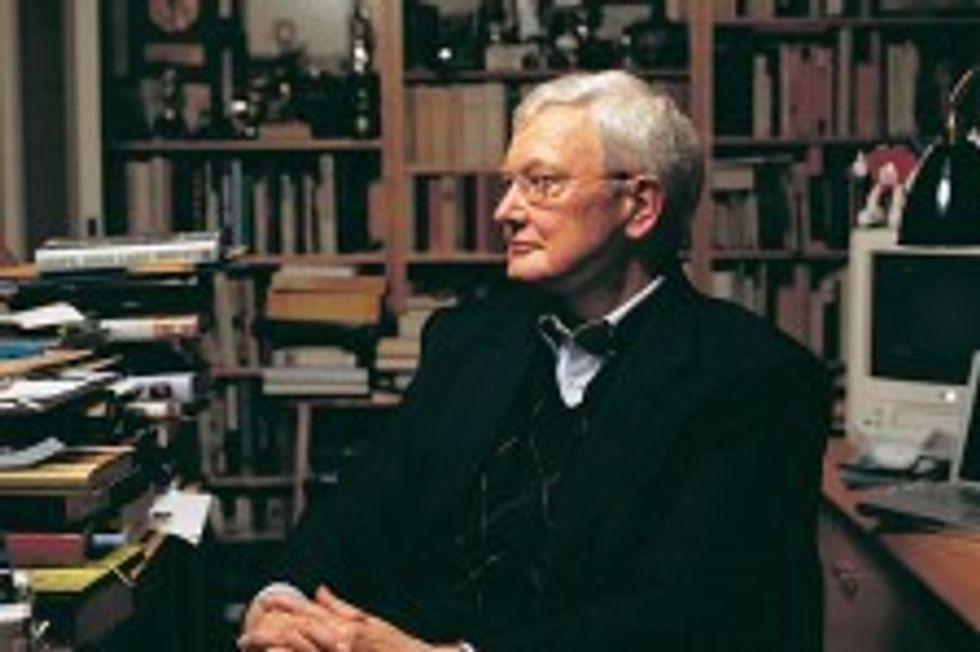
Roger Ebert
Chicago Sun Times
Film Criticism picks apart movies. It's done by scholars, who want to analyze the film's worth. And it's done journalists, who review the film for the general population.
Film History
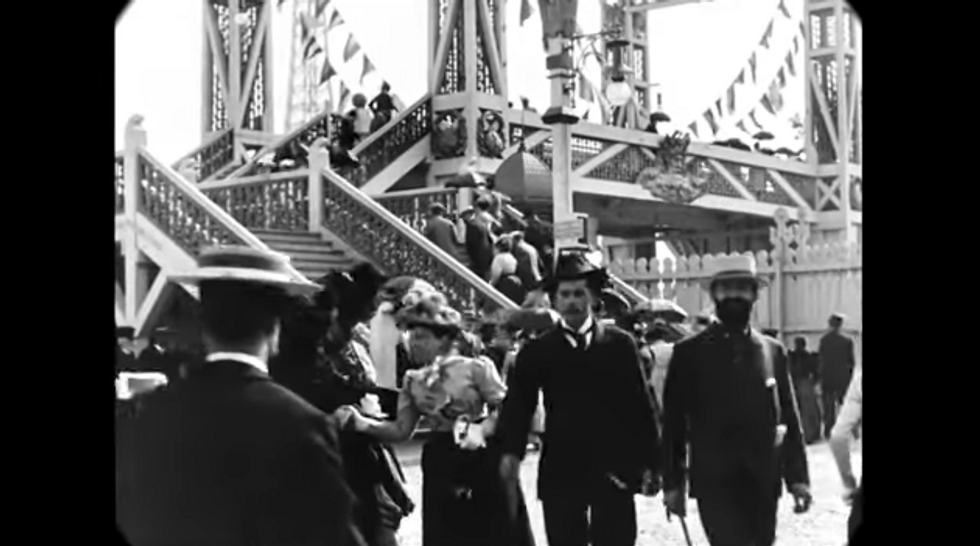 Let The Lumiere Brothers Take you to Paris... in 1890
Let The Lumiere Brothers Take you to Paris... in 1890The history of film is a story of technological marvels, artistic revolutions, and its evolution into a global language that shapes our understanding of the world. Here's a journey through its captivating past:
The Seeds of Moving Pictures
Long before flickering projectors lit up theaters, the desire to capture motion existed. Optical toys like the zoetrope and praxinoscope used sequences of still images to create the illusion of animation. Visionaries like Eadweard Muybridge captured action through chronophotography, setting the foundation for true motion pictures.
Birth of a New Art Form
In the late 19th century, inventions finally allowed for the recording and projection of moving images. Thomas Edison's Kinetoscope offered individual viewing experiences, while the Lumière brothers' Cinématographe, unveiled in 1895, projected films to a paying audience, marking the dawn of cinema as we know it.
The Silent Spectacles
The silent era was a whirlwind of experimentation. Early films were short and simple, often showcasing everyday life or comedic gags. Pioneering figures like Georges Méliès introduced fantastical special effects, while directors like D.W. Griffith brought complex narratives to the screen with his epics, including the highly controversial The Birth of a Nation. This era also witnessed the rise of slapstick giants like Buster Keaton, Charlie Chaplin, and Harold Lloyd, whose iconic performances still evoke laughter today.
Sound Revolutionizes Cinema
The arrival of sound technology in the late 1920s changed cinema forever. The Jazz Singer (1927) ushered in the era of "talkies," giving birth to new genres like the musical. Dialogue and sound effects became integral tools for storytelling, transforming filmmaking as profoundly as the addition of color.
Hollywood's Golden Age
The 1930s to the 1950s saw the rise of the studio system and the Golden Age of Hollywood. Studios churned out genre films with recognizable stars and lavish productions. Technicolor brought vibrant hues to movies like The Wizard of Oz (1939), and audiences flocked to epic blockbusters like Gone with the Wind (1939).
Rebellions and New Waves
From the 1950s, cinematic winds began to shift. Movements like the French New Wave rejected traditional styles, favoring handheld cameras and improvised dialogue for a raw and spontaneous feel. Italian Neorealism turned its camera on the hardships of ordinary people in the postwar era. In the U.S., the rise of 'New Hollywood' saw a generation of young auteurs like Scorsese, Coppola, and Lucas inject realism, grit, and social commentary into their films.
Blockbusters and the Digital Era
The 1970s and onward witnessed the explosion of the blockbuster. High-concept films like Jaws (1975) and Star Wars (1977) dominated the box office, driven by spectacle and special effects. Independent filmmakers continued to thrive, with figures like Quentin Tarantino and Spike Lee bringing fresh, provocative voices to the screen.
The digital revolution has irrevocably transformed filmmaking. Computer-generated imagery (CGI) allows for ever-more fantastical worlds, while digital distribution has changed the way we consume films.
The Legacy of Film
From its humble beginnings to today's technological marvels, film has become an art form with a powerful global reach. It holds a mirror to our society, provokes debate, inspires us, and provides both escape and deeper understanding. As technology continues to evolve, the future of film seems limitless, promising even greater immersive experiences and a more diverse tapestry of cinematic storytelling.
How to Read a Film
So you pop your Blu-Ray into the player, and you're ready to get started. The first thing you’re going to want to do is to pay attention to. The best film analysis may require you to be pretty liberal with the “pause” and “play” buttons. You’re looking for choices made by the director, cinematographer, and editor that clue you into the emotional response and messaging of every scene.
But how can you tell what they want you to feel?
Sometimes it’s not as easy as listening to the swelling score.
Roger Ebert, often credited as the man who brought criticism to the masses, uses this cheat sheet to break down a film:
"In simplistic terms: Right is more positive, left more negative. Movement to the right seems more favorable; to the left, less so. The future seems to live on the right, the past on the left. The top is dominant over the bottom. The foreground is stronger than the background. Symmetrical compositions seem at rest. Diagonals in a composition seem to "move" in the direction of the sharpest angle they form, even though of course they may not move at all. Therefore, a composition could lead us into a background that becomes dominant over a foreground. Tilt shots of course put everything on a diagonal, implying the world is out of balance. I have the impression that more tilts are down to the right than to the left, perhaps suggesting the characters are sliding perilously into their futures. Left tilts to me suggest helplessness, sadness, resignation. Few tilts feel positive. Movement is dominant over things that are still. A POV above a character's eyeline reduces him; below the eyeline, enhances him. Extreme high angle shots make characters into pawns; low angles make them into gods. Brighter areas tend to be dominant over darker areas, but far from always: Within the context, you can seek the "dominant contrast," which is the area we are drawn toward. Sometimes it will be darker, further back, lower, and so on. It can be as effective to go against intrinsic weightings as to follow them."
--- Roger Ebert
While he goes on not to take any of that as the whole truth, it's a great start for the novice viewer. Ready to get to the harder stuff?
Let's go back to the list Film Theorists use to analyze and break them down one by one.
Types of Films
There are three main types of films. Realism, Classical, and Formalism. We have an article based on rejecting realism and embracing formalism. So once you have the definitions down, circle back for some fun!
Realism
This type of film focuses on the real. Movies and TV take us to many different places, but to fall into this category, the piece has to be dedicated to showing the unfiltered world.
Some examples would be Fish Tank, The Bicycle Thief, The Deer Hunter, Kids.
Characteristics:
- Nonprofessional actors (with exceptions)
- No special effects
- On location sets and props
- Minimal editing
- Natural lighting
- Documentary-style
Realism strives to show the real world for what it is. It gets down and dirty. The ability to shoot and create movies using phones and digital cameras has brought back a recent surge in Realism film. Some recent movements in realism are Mumblecore films and Modern Realism. Films like The Florida Project, Fruitvale Station, and Once strive to show their characters dealing with real issues of the day to day life.
Classical
This falls between the two extremes of Realism and Formalism. Classical film still wants to emphasize authentic moments between real people but with the manipulation of its creative production elements.
Movies like Lone Survivor, Citizen Kane, The Godfather, Trainwreck, and Spotlight.
Characteristics:
- Professional actors
- Minimal or no special effects
- On location or in studio
- Editing used for time-lapse
- Lighting and sound used to create a mood
Most drama movies you watch falls into the Classical category. Remember, this is Classical in form, not to be confused with the kinds you watch on TCM. But…lots of those classic movies are Classical too.
Still with me?
Formalism
Formalism focuses on the Director bringing the audience an altered reality that they’ve created. It’s pretty much every Guillermo Del Toro movie. And every Superhero movie. And every Star War. Most modern movies. Film Theory and Disney are compatible. Who knew?
Characteristics:
- Professional actors
- Relies heavily on special effects
- Editing speeds up or slows down time
- Lighting and sound create exaggerations
- Breaks the illusion of reality
Lucky for us there’s no actual Thanos showing up to wipe out the Earth’s population. But Formalism seeks to show us a completely artificial world. A lot of times these movies are why we go to the theater. They’re also responsible for the rise in animation for adults. This is how you apply Film Theory to Rick and Morty.
Film Shots
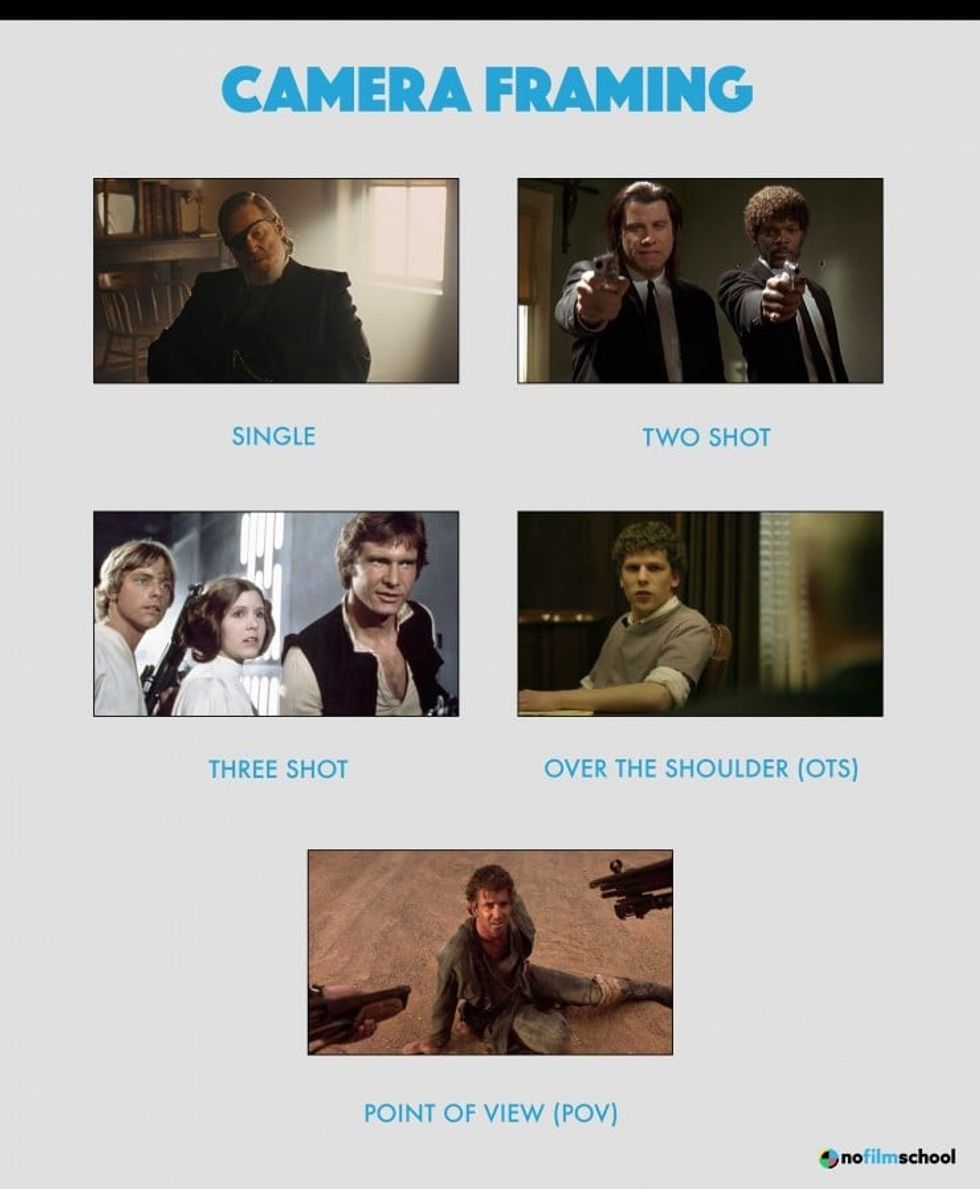
here are ten kinds of shots:
- Extreme Close-Up (ECU)
- Close-Up (CU)
- Medium Shot (MS)
- Full Shot (FS)
- Long Shot or Wide Shot (LS)
- Extreme Long Shot (ELS) or Extreme Wide Shot
- Deep Focus
- American Shot
- Over The Shoulder (OTS)
- POV Shot
We dissect every scene as a combination of these shots. Different combos create different moods and different directorial intentions.
Angles
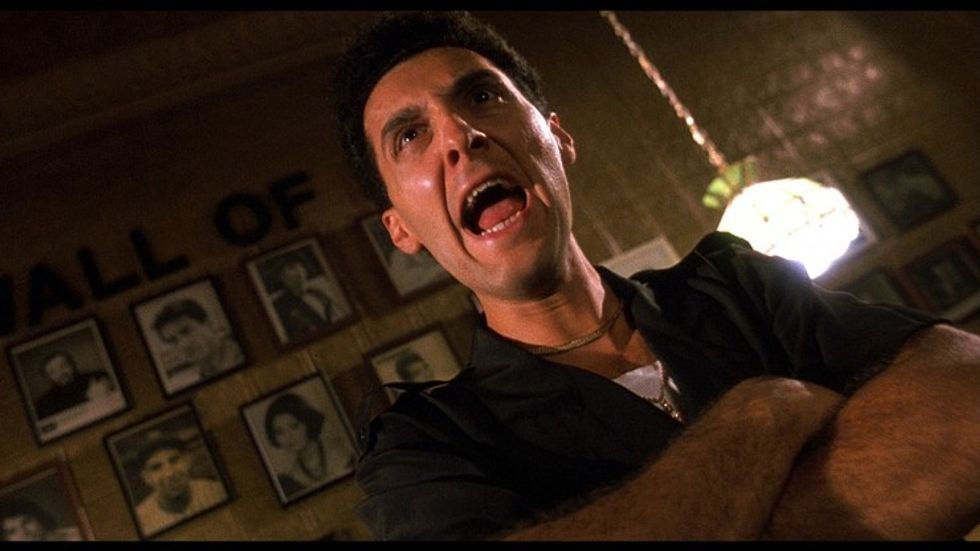
'Do the Right Thing'
Criterion
There are four main angles:
Eye Level
- Definition: The camera is positioned at the same height as the subject's eyes, creating a horizontal line parallel to the ground.
- Effect: Eye level shots feel neutral, natural, and realistic. They allow the viewer to connect with the character on an equal footing, without imposing superiority or inferiority.
High Angle
- Definition: The camera is positioned above the subject, looking down. The angle can be subtle or extreme.
- Effect: High angles can make subjects appear vulnerable, small, weak, or insignificant. They can also provide a broader overview of the scene.
Low Angle
- Definition: The camera is positioned below the subject, looking up. Like high angles, the degree of tilt can range from subtle to dramatic.
- Effect: Low angles can make subjects appear powerful, dominant, imposing, or heroic. They can also exaggerate height and distort perspective for a dramatic effect.
Oblique Angle (Dutch Angle)
- Definition: The camera is deliberately tilted to one side, resulting in a frame where the horizon line is not level.
- Effect: Oblique angles create a sense of disorientation, unease, tension, or psychological imbalance. They suggest something is 'off' or unusual in the world of the film.
Important Note: The effect of these angles can be highly contextual and depend on other factors like lighting, composition, and the film's overall tone.
These angles are also used to elicit emotions from the viewer. When you’re making your shot lists and storyboard think about how you can manipulate the viewer into emotions based on how you shoot the scene.
Lighting
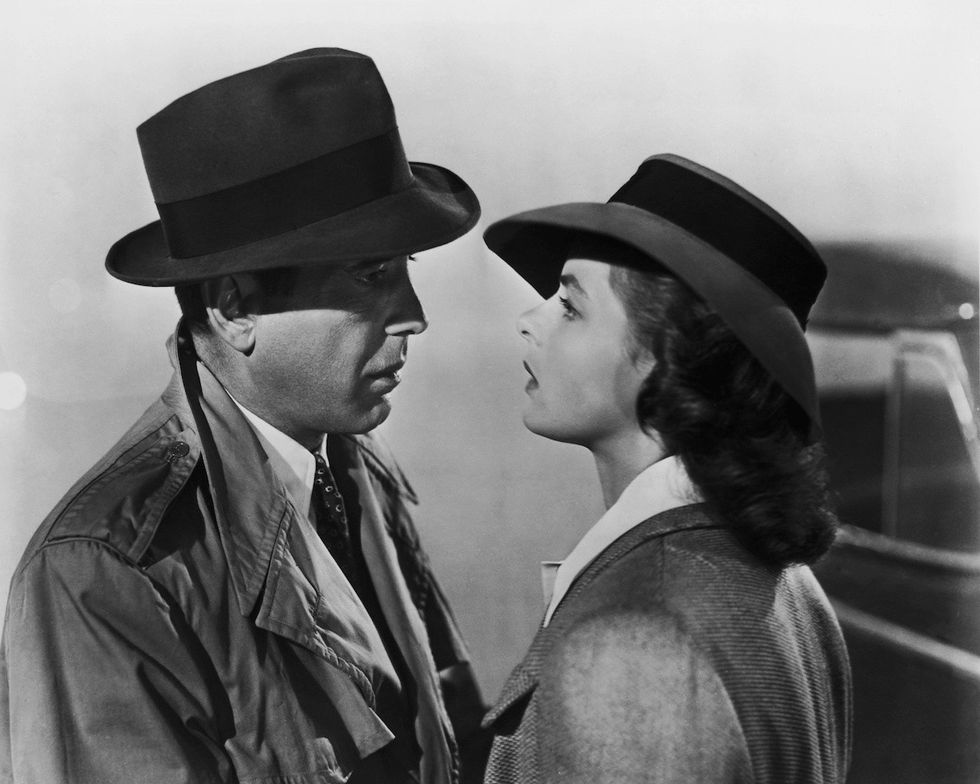 'Casablanca'CREDIT: Warner Bros. Pictures
'Casablanca'CREDIT: Warner Bros. PicturesThere are four main kinds of lighting:
High Key Lighting
- Emphasis: Brightness, even illumination, minimizing shadows.
- Technique: Uses a strong fill light to reduce contrast, along with a key light and often a backlight.
- Effect: Creates an optimistic, upbeat, and youthful feel. Shadows are minimal, and details are clearly visible. Often used in comedies, sitcoms, and commercials.
Low Key Lighting
- Emphasis: Deep shadows, high contrast, and selective illumination.
- Technique: Employs a hard key light with little or no fill light, leaving large areas of the image in darkness.
- Effect: Creates a sense of drama, mystery, suspense, and even danger. Often used in thrillers, film noir, and horror genres.
Chiaroscuro Lighting
- Emphasis: High-contrast lighting with dramatic interplay between light and shadow. The term comes from Italian, meaning "light-dark."
- Technique: Uses strong, directional light sources to sculpt the subject, creating sharp contrasts and deep shadows.
- Effect: Creates a sense of depth, volume, mystery, and can be used to highlight specific emotions or themes. Chiaroscuro was prevalent in Renaissance painting and heavily influenced film noir cinematography.
Silhouette/Black Lighting
- Emphasis: Creates a stark outline of the subject with the background brightly exposed.
- Technique: Achieved by placing a powerful backlight behind the subject with no key or fill lights in the front.
- Effect: Isolates the subject, creating a sense of mystery, anonymity, or drama. The silhouette can be used to emphasize the subject's form or conceal their identity.
Each version of the lighting sets a mood. Think about the genres of movies you love. Comedy and Noir are lit with different ways to get different moods. The better you get at making movies, the more you can blend these styles for fresh and unique ways to draw an audience. Like in Game Night.
Color
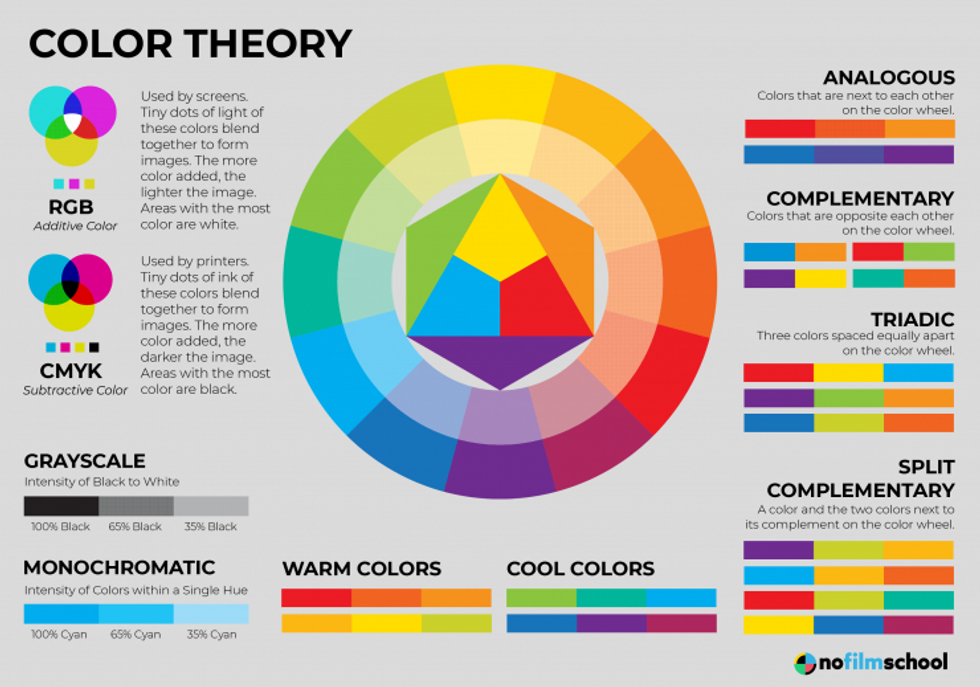
There are two main kinds of color:
Saturated
- conveys happiness, fantasies, romance, or some idyllic scenery
Think about the frames in Willy Wonka. The factory is seen as a wonderland where dreams come alive.
Desaturated
- conveys the past, struggle, depression, or some other dystopia scenery
Compare Wonka to The Road. It looks like a place no one wants to be.
Sound
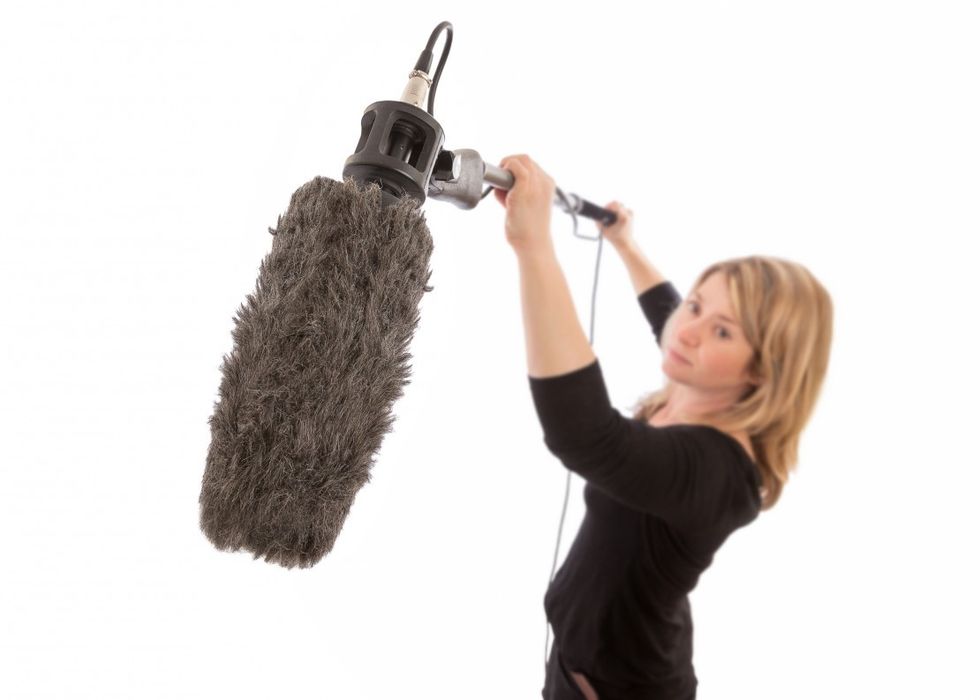
Shutterstock
There are two main kinds of sound:
Diegetic
Sound whose source is visible on the screen or whose sound is implied to be present by the action in the film; also characterized by offscreen or on-screen
Examples:
- Voices of characters
- The sound made by props
- Music coming from instruments in film
The easiest way to understand diegetic sound is to think about what the characters on screen can hear.
Non-diegetic
Sound whose source is not visible on the screen nor has been applied by the action of the film; basically, any sound that comes outside the story place
Examples:
- Narrator’s commentary
- Sound effects added for dramatic effect
- Mood music
Again, these are things the audience hears that the characters do not.
Editing
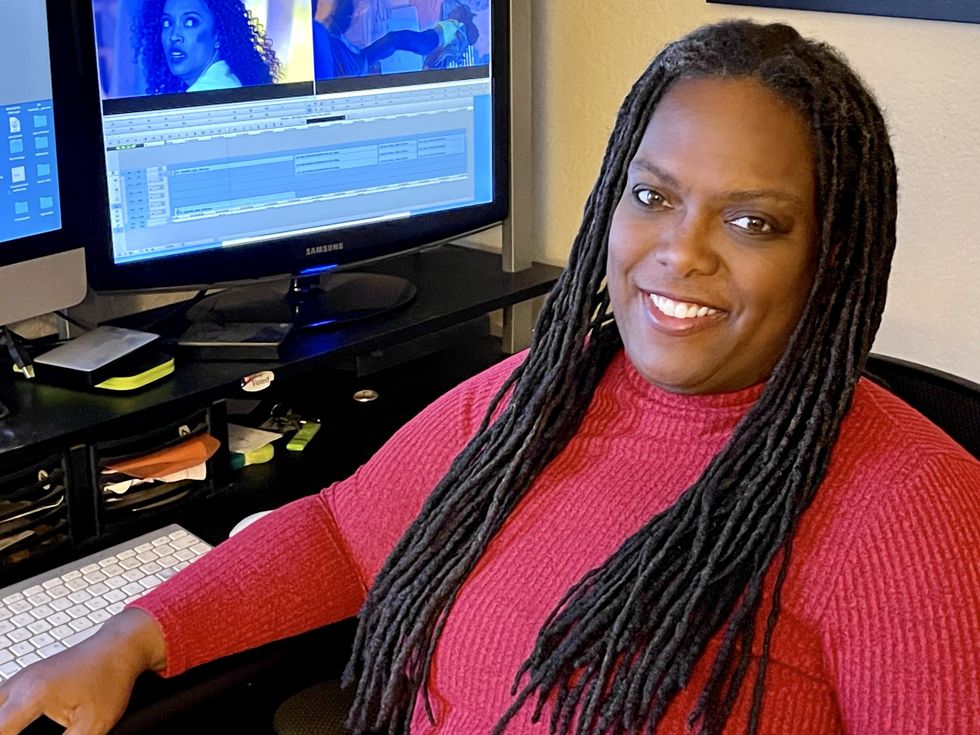 Editor Libya El-Amin
Editor Libya El-AminFilm editing is one of those things that usually go unnoticed in Hollywood films. An editor’s job is to make the story fluid and work as a guide for the audience. If they’re bad at their job, the editing is noticeable, jerky, and takes you out of the experience. Here are some different kinds of editing.
- Continuity:
- a collapse of time and space while preserving fluidity
- Classical:
- This style jumps from long shot to medium shot to close up for dramatic effect
- Radical Subjective Continuity:
- cuts of different time and space for dramatic effect
- Thematic:
- edits that are driven by a particular theme
- Associative:
- juxtapositionof two shots that when combined have meaning (but separate, they do not)
- Dialectic:
- edits drove by expressing a contradiction
An editor’s job is hard. You can make it easier by planning your shots and making storyboards.
Mise-En-Scene
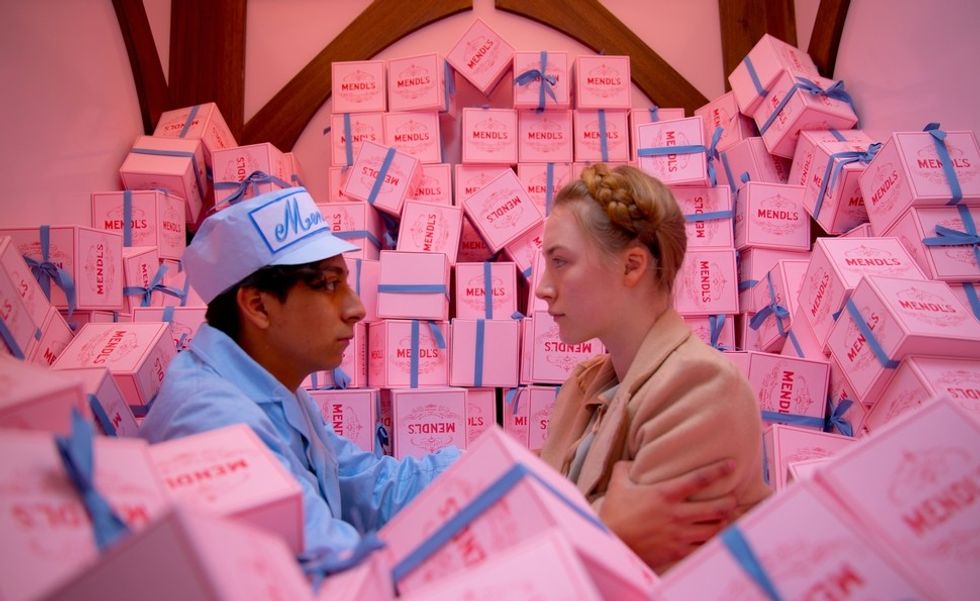
'The Grand Budapest Hotel'
Fox SearchlightMise-en-scene is a French word that means “placed on the stage.” Everything that appears before the camera and how it’s arranged on the screen to convey meaning in the film. So be smart when you’re organizing furniture around a room. It matters. Mise-en-scene can be broken down into the following:
- Placement around frame
- Face to camera
- Quarter Turn
- Half Turn
- Three Quarter Turn
- Full Turn
- Back
- Territorial space
- Background
- Mid-ground
- Foreground
- Frame constraints
- Tight:
- conveys subject’s intensity, importance and inability to escape.
- Open:
- conveys desolation, space, freedom, or insignificance.
- Tight:
Film Theory Focuses
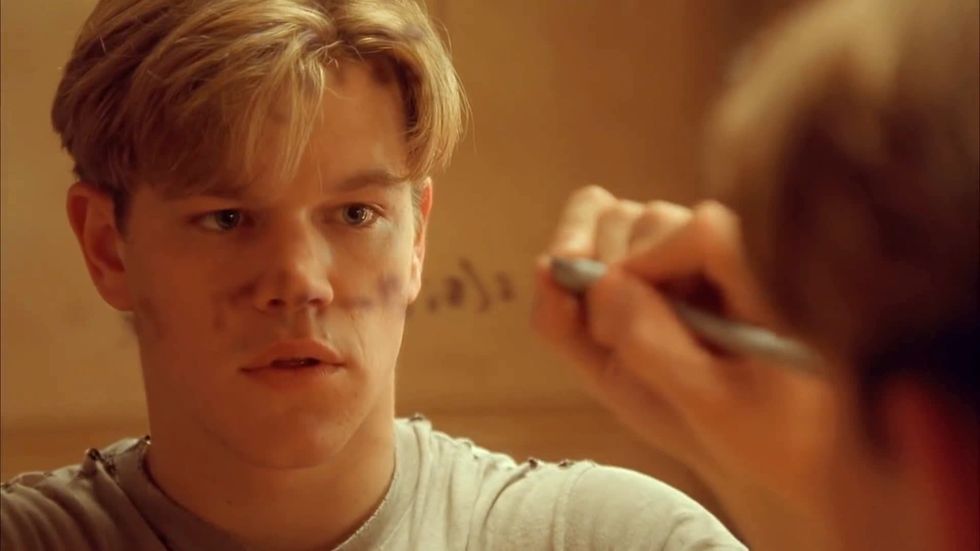 'Good Will Hunting'Credit: Miramax
'Good Will Hunting'Credit: MiramaxNow that you have the basics of Film Theory, it's time to look at some of the more nuanced approaches to the topic. The following Film Theory studies dig in a little deeper to their readings. Some people even make an entire career chasing examples and meanings inside these definitions.
Film theorists use these elements in conjunction with various theoretical frameworks:
- Formalism: Focuses on how the technical elements create meaning, independently of real-world context.
- Structuralism: Seeks underlying patterns and structures that shape films, finding common archetypes and symbolism.
- Apparatus Theory: Examines how the filmmaking process and technology itself influence ideology and how viewers perceive a film.
- Auteur Theory: Celebrates the director as the primary 'author' of a film, looking for recurring themes and stylistic choices across a filmmaker's body of work.
- Feminist Film Theory: Analyzes the portrayal of women, power dynamics, and challenges the concept of the "male gaze."
- Marxist Film Theory: Focuses on how films reflect or critique social and economic power structures.
- Queer Theory: Examines representations of sexuality and gender identity, challenging traditional cinematic depictions.
Apparatus theory
This theory, dominant in the 1970s, says that ALL movies were made to reflect some reality and ideology. That means that every part of a movie, acting, cinematography, lighting, sound, has meaning. The main argument is that the viewer takes all these elements in as they watch and the view helps impose meaning onto the film.
Kind of like that time I told everyone Super 8 was about the Oedipus complex because the entire third act of the movie takes place inside a metaphorical womb and is about a little boy who has to physically let his mother go to move on in life.
Auteur theory
We have an entire post chasing Auteur theory which you can view here. But the basic gist is that the Director puts his/her stamp on a movie because they oversee all audio and visual elements of the motion picture, is more to be considered the “author” of the movie than is the writer of the screenplay. This became a popular theory in France in the 1940s.
American critic Andrew Sarris pushed this idea, but it took hold in 1951 when Andre Bazin wrote about it in his periodical Cahiers du cinéma. The theory is still tossed around today, with many people trying to add rules on how many movies the director must make and whether or not the director can also be the writer.
Writers are used to getting the short end of the stick all over Hollywood so suffice it to say; they’re not huge proponents of Auteur theory. But no one cares.
Feminist Film Theory
Feminist film theory is a film criticism derived from feminist politics and feminist theory. The best way to summarize Feminist Film Theory is this: Most movies are made by men and controlled by men. Therefore, cinema as a whole has been created through the lens of the “male gaze” and thus forced roles and stereotypes onto women that may negatively affect their social standing. Feminist Film Theory first came to light in the 1960s and ’70s. For further reading check out Laura Mulvey's essay, Visual Pleasure and Narrative Cinema.
This can be applied to anything. From Tarantino to Welles. Rest in Peace, Agnes Varda.
Feminist Film Theory is alive and well today and has even transcended scholars into pop culture with the Bechdel Test.
What’s the Bechdel Test?
The Bechdel test asks whether a work of fiction features at least two women who talk to each other about something other than a man. In recent years, people have also used the clarification that both women must be named. The test is named after the American cartoonist Alison Bechdel, in whose comic strip Dykes to Watch Out For it first appeared in 1985. Bechdel credited the idea to a friend, Liz Wallace, and the writings of Virginia Woolf. After the test became more widely discussed in the 2000s, some variants and tests inspired by it have been introduced.
Think about your FAVORITE movie. Does it pass the test?
Here are a few HUGE movies that don’t:
The Blind Side, Lord Of The Rings, The Little Mermaid, Breakfast at Tiffany's.
And some HUGE movies that do:
Frozen, Children of Men, Hidden Figures, Bridesmaids, Star Wars: The Last Jedi.
Genre Studies
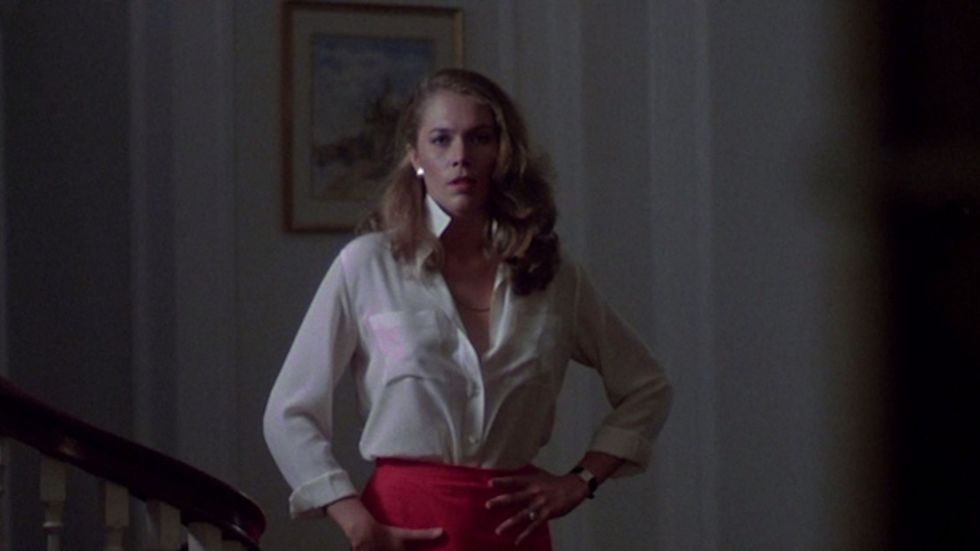
'Body Heat'
Criterion
Genre Studies is probably the broadest of these Film Theories. It breaks down films into their genre and then analyzes what tropes or themes show up over and over.
Then Genre Studies Theorists try to see if those themes mean something about the world or time in which they occurred. Are the hard-boiled 80’s cop movies actually about Toxic Masculinity? How is the damsel in distress used and subverted in the Action Genre? Why is sex punished in horror films?
Queer theory
Queer Theory came about in the early 1990s. Like Feminist Film, it breaks films down from the perspective of how they originated. It proposes that film, thanks to early codes and cultural constraints, were all made from the “straight” perspective. By breaking this barrier down, queer theory can show the limitations of that model and work to undo the norm. For more on Queer Theory, check out this breakdown from Film Reference.
Some examples of Queer Theory in action are Todd Haynes’s Poison, which used the horror film genre to investigate the politics of gay sexual practices of the AIDS era. Also Kimberly Pierce’s Boys Don’t Cry, which uses Feminist Film Theory AND Queer Theory to expose the way society treats a Transgender protagonist.
Why Film Theory Matters
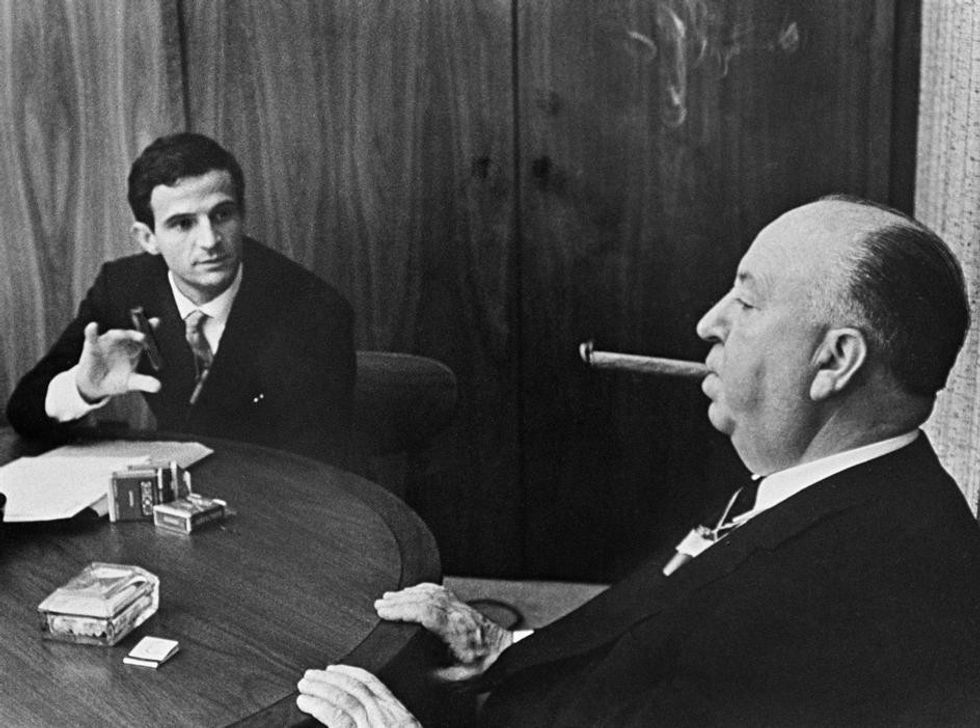 Love the Hitchcock/Truffaut Interviews? Listen to All 25 Tapes
Love the Hitchcock/Truffaut Interviews? Listen to All 25 Tapes As you read this post I hope you understand how and why Film Theory matters. This isn’t just about being the person at the cocktail party who talks about how Hitchcock influenced Spielberg. Or the person that recognizes Tarantino’s A Band Apart logo is an homage to the French New Wave movie “Bande à part” directed by Jean-Luc Godard.
If you’re making or studying film, it’s crucial to be able to break down the elements of what makes a movie “good” or “bad.” Also, if you’re writing, directing, or producing you can have informed suggestions on framing, editing, and creating meaningful work.
Like the list of 30+ Films You Need to Watch About Race in America.
Here's why film theory is so important for understanding and appreciating cinema:
- Deeper Appreciation: Film theory provides tools to analyze the various elements that make up a movie – camera work, editing, sound, etc. Instead of just passively enjoying a film, you start to understand the intentional choices filmmakers make to evoke emotion, convey information, and create specific effects. This leads to a richer and more rewarding viewing experience.
- Discovering Hidden Meaning: Films often delve into themes, symbolism, and social commentary. Film theory helps you unlock these layers. Instead of taking a film at face value, you analyze patterns, motifs, and historical or cultural references to find the deeper meanings within.
- Critical Thinking: Film theories often question dominant filmmaking practices and challenge conventional narratives. Understanding theories like feminist or Marxist film theory helps you become a critical viewer, recognizing how films reflect or challenge power structures, social norms, and representation.
- The Filmmaker's Toolkit: If you're a budding filmmaker, film theory teaches you about the "language" of cinema. You understand how to use camera angles, lighting, and editing techniques to intentionally shape your audience's experience and communicate your own ideas effectively.
- Appreciating Film as Art: Film theory reminds us that films aren't merely entertainment; they are complex artistic creations. By studying the techniques, histories, and underlying ideas explored by filmmakers, you develop a greater understanding and respect for the art form itself.
In Short: Film theory allows you to see beyond the surface of a movie. It helps you become a more informed, analytical, and appreciative viewer, transforming films from simple stories into multi-layered experiences.
Film Theory Careers
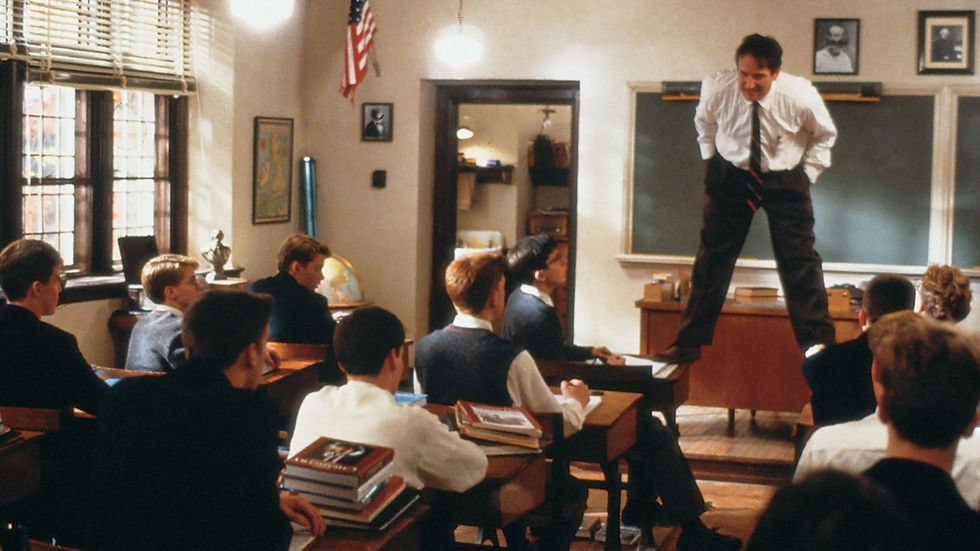 'Dead Poets Society'CREDIT: Buena Vista Pictures Distribution
'Dead Poets Society'CREDIT: Buena Vista Pictures DistributionThere are many places a degree in Film Theory can take you. Mine landed me at No Film School. Here are some other places where a good base of Film Theory.
Professors
If you went to Film School or took a Media Studies course in college you probably already know about this path. Most Film Theorists are college professors. They teach all over the world and have a vast array of specialties. My favorite Professor in college recently wrote a book on Italian American portraits of Masculinity in Film and Television. The nice part here is you can find and chase your niche. Sure, you have to go to school for a long time, get your doctorate, search a job, beg for tenure, and deal with college kids, but people seem to love it…
Critics
Think you’re ready to take over where Siskel and Ebert left off? RIP. Are you the person your friends go to before Rotten Tomatoes? Maybe a career in Film Criticism is right for your future. As we mentioned before. It’s not about “good” and “bad” but having a breadth of knowledge that allows you to compare a movie/TV show to the pantheon of entertainment that came before it.
You can comment on how the lighting changes the tone. Or how the director’s control of the edit makes the movie too long, too short, or just right. Or you could even make a YouTube channel where you blow all that up and focus on nitpicks.
Creators
Lastly, if you’re going to be a creator in Hollywood, you’re going to need to know your stuff. The last thing you want to do is be in a general meeting or a pitch and not know your stuff. Producers are going to ask for visual references. They’re going to want to know that you have control on the page and the sound stage.
Film Theory is going to help you create more original, inspired content.
What's next? Does 'A Star is Born' take place in a universe where there was no 9/11?
Use those fresh Film Theory skills to break down whether or not this rumor is true!
OK, there are going to be some naysayers on this one, but technically speaking if you believe in even just one conspiracy theory (say the moon landing, the JFK assassination or that Little Caesars is feeding people DiGiorno’s frozen pizzas) then you are a conspiracy theorist yourself. This means you can never question the validity of any other conspiracy theory on the grounds of not having enough evidence or, you know, common sense.
So, with that established, we now present a new, terrifying conspiracy theory put forth by LA-based comedian Cait Raft that posits that Bradley Cooper’s A Star is Born place in an alternate universe where 9/11 never happened.
Also there are emerging genres all the time. What do you think about Neo-Noir, or Neon Noir?











